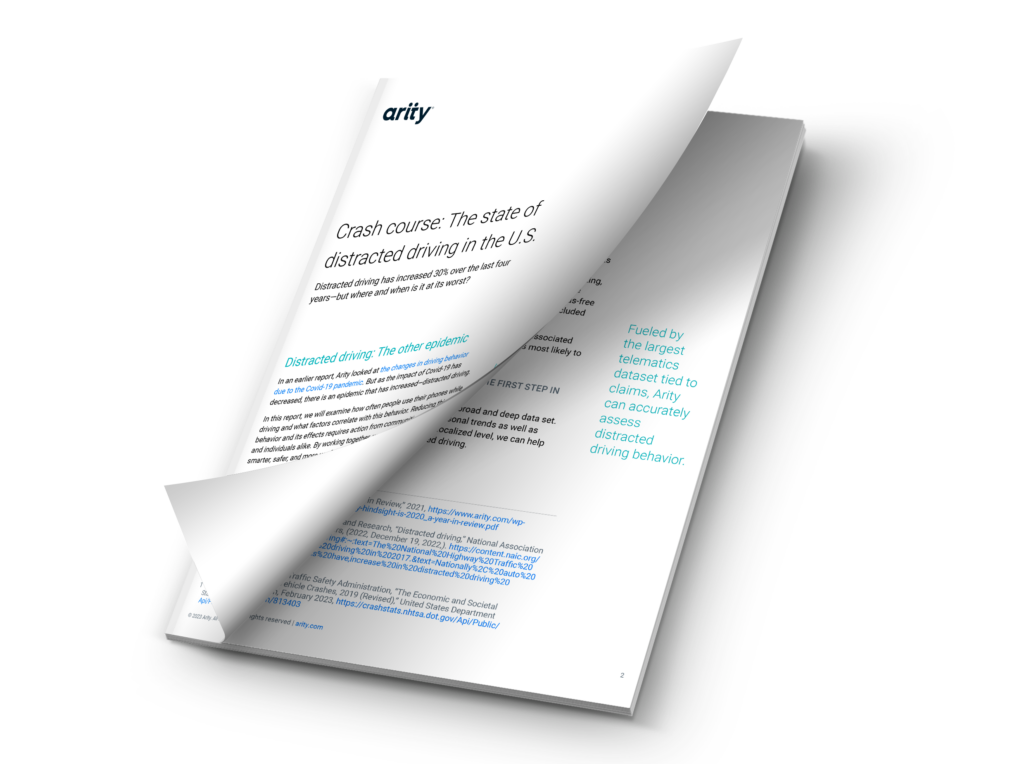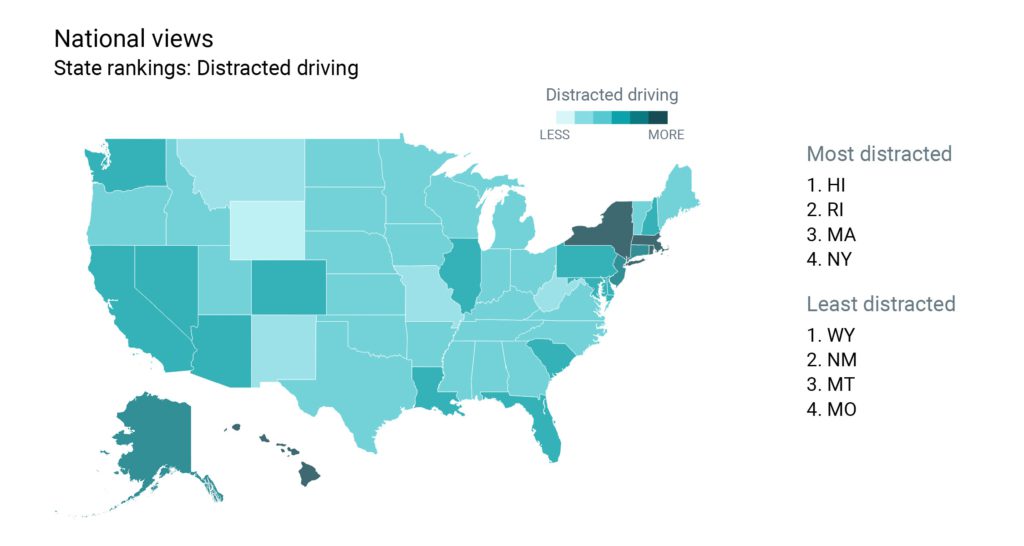Thanksgiving driving behavior trends 2025 Read article


Megan Jones, Arity’s Analytics Director, recently sat down with Streetsblog USA to discuss our 2023 distracted driving report and explore an interesting correlation between state’s distracted driving laws and levels. Here are three need-to-know insights:
Distracted driving has increased 30% over the last four years – a devastating stat considering it resulted in $98 billion in economic costs and 10,000+ lives lost in the U.S. in 2019.
With a mission to make transportation smarter, safer, and more useful for everyone, Arity delved into our driving behavior database to better understand the nature of distracted driving. Specifically, we define distracted driving as phone handling while driving. We found where and when distracted driving is most frequent along with what factors correlate with the behavior.
We compiled our insights into a report, Crash course: The state of distracted driving in the U.S., to help others better understand and combat this epidemic.


After reviewing our distracted driving data, Streetsblog USA discovered a surprising correlation: States with less restrictive distracted driving laws have the lowest amount of distracted driving.


For example, Wyoming was ranked as the least distracted state despite the fact that teenagers with graduated drivers’ licenses are legally allowed to use phones behind the wheel. On the other hand, Hawaii, which ranked as the most distracted state, is recognized for having optimal distracted driving laws by the Advocates for Highway and Auto Safety.
To dive deeper into the possible why behind the correlation, Streetsblog USA interviewed Megan Jones.
“We’re able to see over time how people regularly drive, not just how people drive when they suspect a sheriff is around the corner. Which is not to say that distraction laws don’t work; it’s just that distraction laws aren’t everything.” – Megan Jones, Analytics Director for Arity
To solve distracted driving, everyone – government, businesses, organizations, and the public – must approach the problem from all angles. Right now, states tend to focus more on disincentives like anti-distraction laws and policies and associated fines.
However, there’s an opportunity to add another angle to encourage distracted driving through incentives.
At Arity, we use our insights, expertise, and technology to help Departments of Transportation (DOTs), auto insurers, vehicle manufacturers and dealers, and more prevent and put an end to this epidemic.
“Instead of only focusing on disincentives and only on areas where drivers might happen to be caught, we believe we can also approach improving safety through a different path of providing coaching and incentives through insurance savings.” – Megan Jones, Analytics Director for Arity
As one example, we empower auto insurers to motivate safer drivers, helping them leverage our data to:
Ready to learn more? Read our 2023 report.